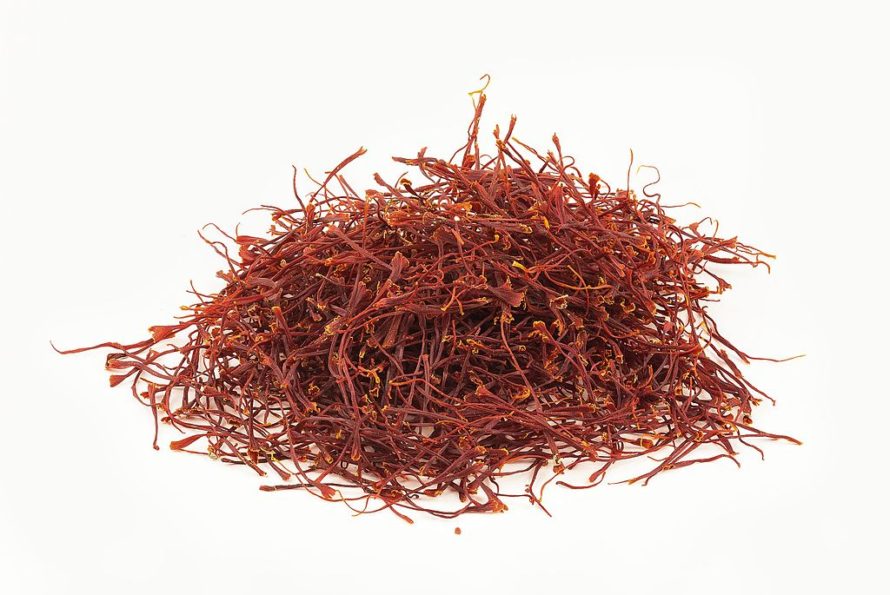
Saffron crocus with red stigmas
Saffron (Crocus sativus) is thought to have originated in Iran but it is difficult to tell because it no longer exists in the wild. It spread from its Middle Eastern home throughout the Mediterranean and Europe and was brought to the New World by European colonists.
It is a fall blooming crocus whose stigma (female sex organs of the flowers) are harvested for use as a seasoning and a food coloring. They are commonly known as “threads” and are either used fresh or dried before use. The taste and fragrance is said to be similar to hay. Saffron has often been referred to as the world’s most expensive spice because it takes thousands of flowers to produce a pound of saffron. If you are growing it for your own use, 2 dozen corms should be enough.
Saffron is hardy in zones 6 through 9. In colder zones, the corms are dug up and over-wintered indoors in a cool area such as a basement. They are replanted outdoors in the spring after the last frost. They should be planted in rich, well-drained soil in full sun. Refrain from watering your corms until the flowers appear in the fall. The corms need to be dry while they are dormant in the summer.
Normally the corms are planted in the late summer or early fall. They should be planted 3 inches deep and 6 inches apart. No flowers will appear that year, but in the spring the foliage will appear, only to die in the heat of summer. That fall, you will rewarded with flowers. Your saffron harvest will be small that year, but will increase each year as the corms grow and multiply.
About every four years, you will need to dig up and divide your corms. Saffron crocus are sterile, so they don’t reproduce by seed. Instead, the corms develop little “cormlets” around the outside of the corm. These cormlets produce new plants. If they are not divided from the parent corms, the plants will become overcrowded and flower production will plummet. After you dig up your corms, carefully break off the cormlets and then replant them and the original corms 3 inches deep and 6 inches apart.
Saffron can also be grown in containers. Use the same spacing, 3 inches deep and 6 inches apart. This is a handy way to grow them in cold areas because you can bring the container indoors during the winter.
Each flower has three bright red stigmas. Harvest the stigmas in the morning when the flowers have fully opened. You can harvest the entire flower or just the stigmas. Use your fingers or a pair of tweezers to carefully pull the stigmas from the flowers. You can either use them fresh or dry them for later use. To dry your stigmas, spread them out in a single layer on a paper towel and store it somewhere cool, dry and out of the sunlight. The stigmas should be dry in 1 to 2 weeks. Store them in a tightly sealed container.

